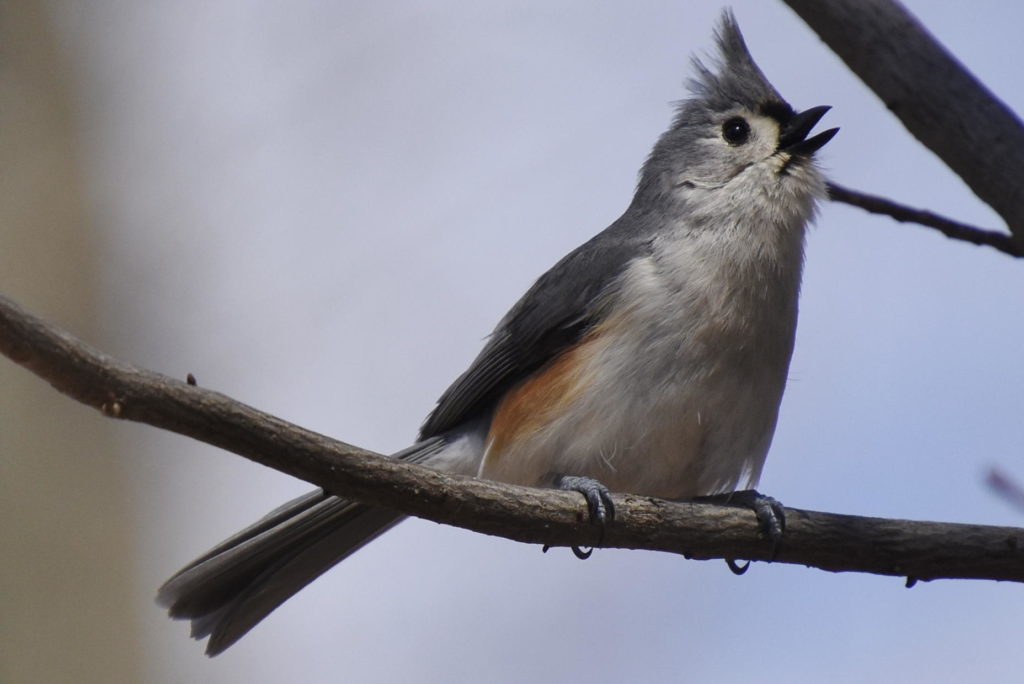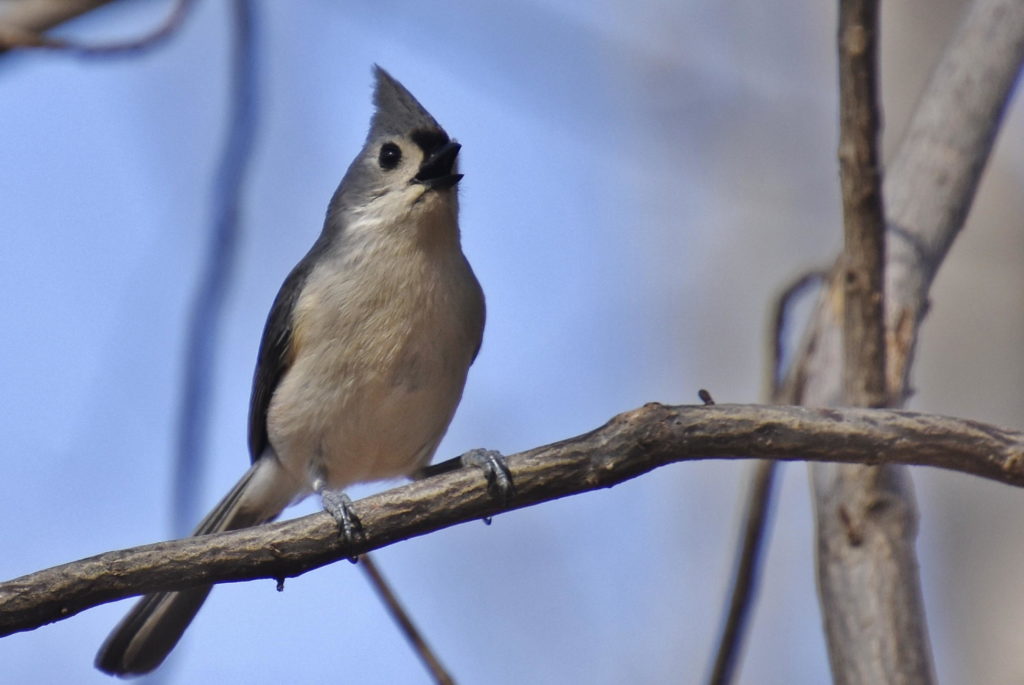Cute and Inquisitive
In the eastern US there are two chickadee species that may be encountered (Black-capped and Carolina). Geographically we sit at the extreme northern end of the range of the Carolina Chickadee. As you move into the northern parts of NJ and further north the Black-capped will be seen. Being so close to the northern and southern ranges of these two species there is probably some hybridization taking place. These two species look very much alike with subtle differences is size, song and calls. For us though you can be pretty sure when you see a chickadee it is the Carolina. Their call, “Chicka-dee-dee-dee,” is very distinctive and the more alarmed they are the louder and more dee-dee-dees they will vocalize. You will see them at feeders, along edges of the perimeter path and in the woods.
There are four titmouse species in North America but only one, the Tufted Titmouse, occurs in the eastern US. It takes its name from a distinctive pointed “tuft” on its head. Overall the bird is gray in color with a white breast and belly, rusty sides and a black forehead. Its most distinctive vocalization is its song. Listen for “Peter-Peter-Peter.” Its behavior is similar to that of the Carolina Chickadee and they are often found in close proximity.
Without going overboard on anthropomorphism, certain birds are gregarious in their small flock habits and are easily attracted to humans that enter their territory. Two related birds that are common and year round residents at Lumberton Leas, the Carolina Chickadee and the Tufted Titmouse, define such characteristics. They are inquisitive by nature and are easily drawn to human observers. In the digital age a birder can use a bird app on their phone to not only see photos of birds but also text material on their ID characteristics, geographic ranges, feeding and nesting habits and listen to their vocalizations (songs and calls). While this is a huge advance to birders it has also brought some controversy when vocalizations are used to attract birds. This is particularly true during the breeding season when birds are looking for mates and under stress. Male birds often think the song they are hearing is an intruder into its territory thus putting stress on the bird. Most birders realize this and use the vocalizations sparingly or not at all in these critical times. However, all is not lost because a real low tech method ( probably much less stressful) called “Pishing” is readily available. Chickadees and Titmice respond very well (as do some other birds) to standing in their territory and quietly going “pish, pish, pish.” Very often Chickadees and Titmice will come down from higher branches to investigate and if you are patient and have some seeds that they like you can eventually get some of them to eat out of your hand.
Text and photos by Robert Koch




